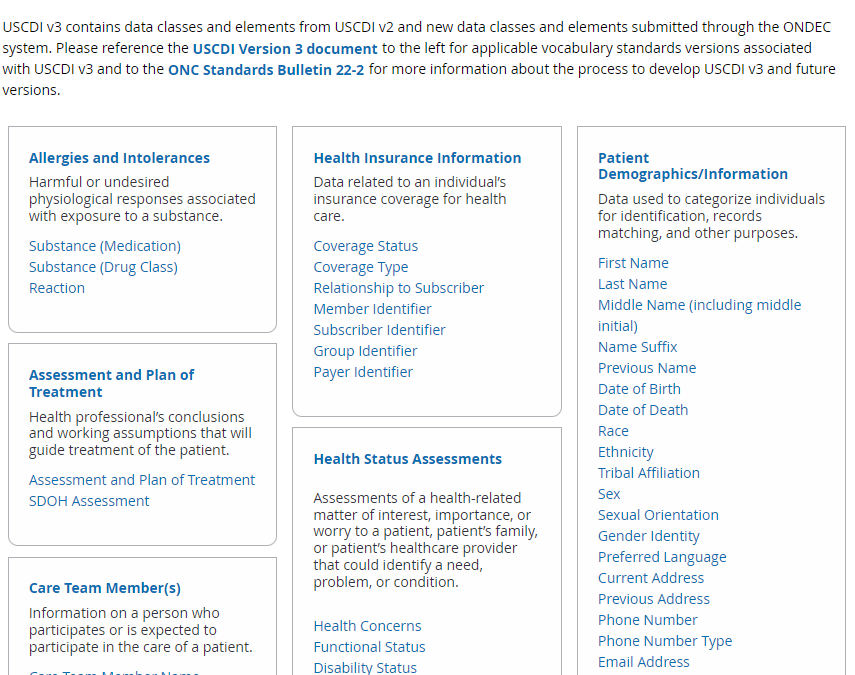USCDI, MIPS, QPP, CURES, CDS…it can all be quite confusing, but let’s try to simplify it:
USCDI stands for United States Core Data for Interoperability (USCDI) and it is just a way to standardize information in an EHR system so it can be shared with others (kind of like how we use ICD codes to talk to insurers about diagnoses). We are currently on USCDI V1, which includes standardization rules for data in an EHR for things like allergies, medications, demographics, vitals, etc. USCDI V3 adds a few more standards like diagnostic tests, clinic tests, etc. You can view United States Core Data for Interoperability (USCDI) V3 here.
On April 11 of this year, HHS proposed a New Rule to Further Implement the 21st Century Cures Act. The key points of the rule which can be found here (HHS Proposes New Rule to Further Implement the 21st Century Cures Act) are all aimed at software developers (not providers). Providers will eventually have to comply with the rule, but essentially by using an EHR that complies with the rules and by participating in MIPS. And that is where the new USCDI standards do affect providers.
MIPS is of course the new payment model that gives CMS the ability to reward high-value, high-quality Medicare clinicians with payment increases – while at the same time reducing payments to those clinicians who weren’t meeting performance. Providers are evaluated and paid based on their performance in 4 categories:
- Quality
- Promoting Interoperability
- Improvement Activities
- Cost
The new USCDI standards relate to the “Promoting Interoperability” category which counts for 25% of the MIPS score (QPP: Promoting Interoperability Performance Category). Promoting interoperability is, in part, a replacement to the “Meaningful Use” program and involves tracking what data exchange the EHR is capable of and how the healthcare provider is using the EHR to exchange healthcare data.
For the 2023 performance year, providers are required to use an Electronic Health Record (EHR) that meets the 2015 Edition Cures Update certification criteria and submit collected data for the required measures in each objective for the same 90 continuous days (or more) during 2023. Participants are required to report on four scored objectives and their measures.
- Electronic Prescribing
- Health Information Exchange
- Provider to Patient Exchange
- Public Health and Clinical Data Exchange
The USCDI standards apply to information exchanged in items 2, 3, and 4.
So for now, providers who are trying to achieve a higher MIPS score, should talk to their EHR vendor to see if the EHR vendor is keeping up with the new USCID data standards. Other than that there is nothing that providers need to do at this time and there is no timeline for when future changes might happen, but PCS will keep you updated.
It should also be noted that for the 2023 performance year, participants are also required to report (yes/no) on the Protect Patient Health Information objective:
- Security Risk Analysis measure
- Safety Assurance Factors for EHR Resilience (SAFER) Guides measure
So don’t forget that your Security Risk Analysis and HIPAA compliance are a huge part of QPP and MIPS, not just HIPAA compliance.

